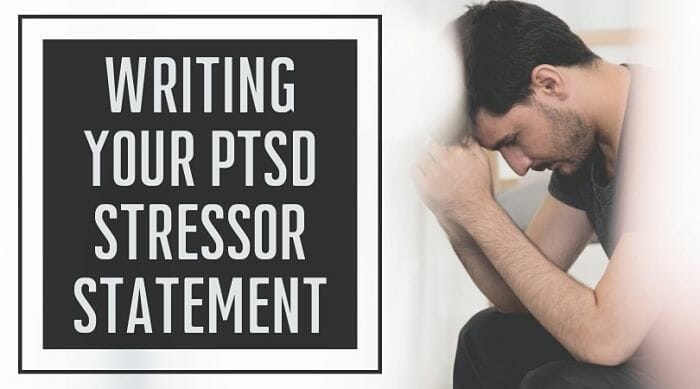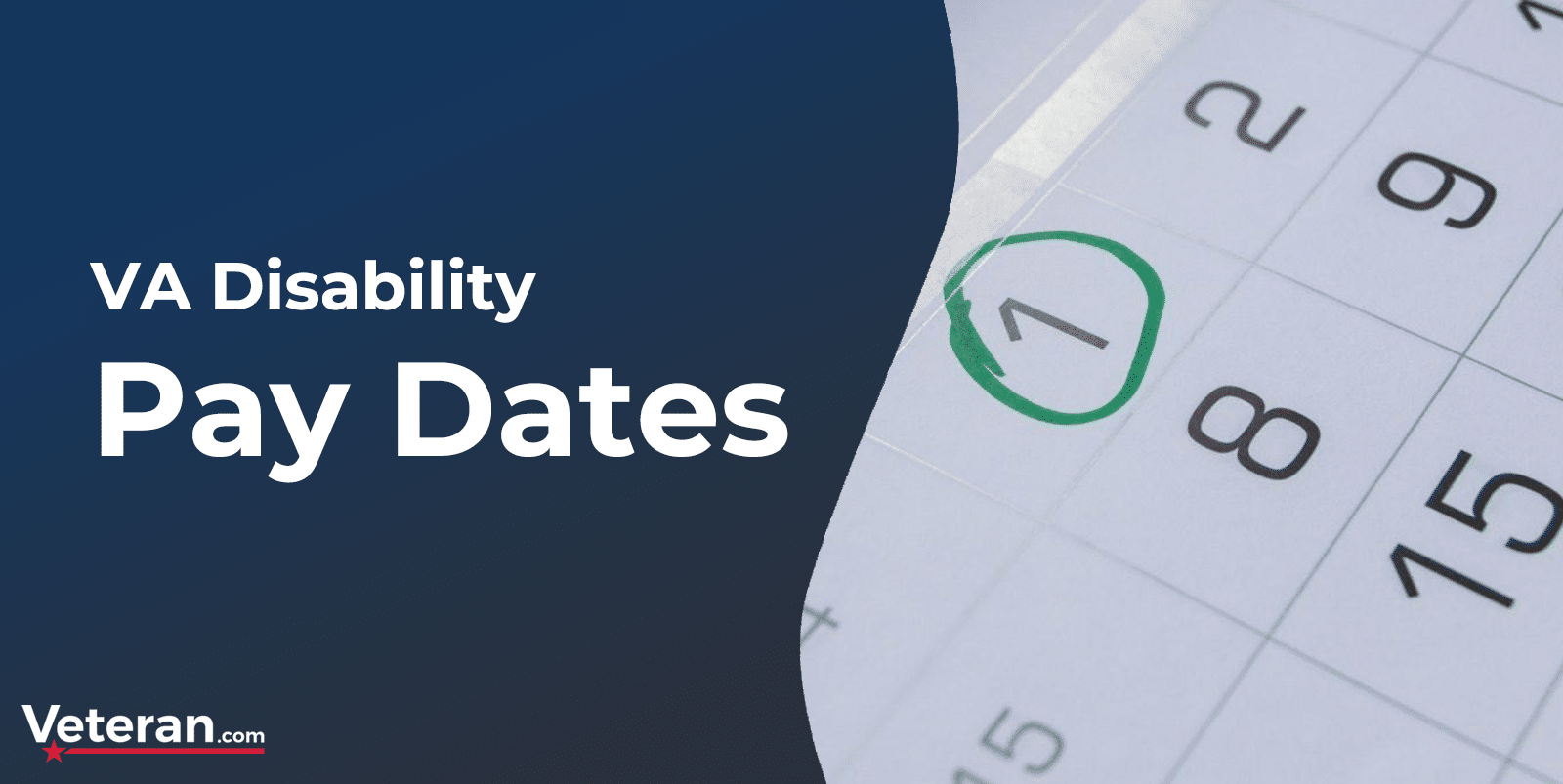Writing Your PTSD Stressor Statement
Updated: December 12, 2020
When filing a claim with the Department of Veterans Affairs about service-connected Post-Traumatic Stress Disorder, you will be required to submit a variety of paperwork and documentation. Some documentation can be submitted prior to a determination that you have PTSD (depending on the timing and context of the submission) but some VA paperwork may require you to have a diagnosis from some source (military or civilian) in order to proceed.
Making a VA PTSD claim ultimately requires submitting VA Form 21-0781 Statement in Support of Claim for Service Connection for PTSD, or VA Form 21-0781-A Statement in Support of Claim for Service Connection for Post-Traumatic Stress Disorder (PTSD) Secondary to Personal Assault.
These forms require a certain amount of narrative, but the forms are not the only ones that allow you the opportunity to discuss your symptoms, their causes, and other relevant details. You should also plan on submitting a “stressor statement” which is a narrative of the events that led to your diagnosis with PTSD.
Disclaimer
What follows is not legal advice, nor should it be construed as a “guaranteed method” for submitting a PTSD claim and succeeding in getting a VA disability rating. What follows is intended to help you write your statement but does not claim anything beyond that. The VA makes the final determination in all claims cases and reserves the right to do so based on the evidence and supporting documentation you submit.
Gather Your Documents And Your Support Letters First
For both the VA form and your own personal stressor statement, you will need to prepare by gathering supporting documentation such as your military and civilian medical records, your military service record, your DD Form 214 or Guard/Reserve equivalent, etc.
When you write your PTSD Stressor Statement, you will need to have accurate information about the dates and locations of your military service, campaigns or missions you participated in, length and nature of your military service, etc.
You will need statements by friends, family, doctors, and other professionals who can provide further evidence for your claim even if that information is a “buddy letter” describing how you may have appeared to others following the diagnosis of PTSD.
There are some things you definitely should do when writing the stressor statement, and there are things you should definitely NOT do. What follows is advice on how to write the stressor letter for a more effective outcome with your claim.
Keep in mind that the following advice is not legal in nature, but more of a guideline for how you should present your case. Also keep in mind that some of these principles will also serve you well when filling out the VA forms mentioned above in association with your claim.
Writing A PTSD Stressor Statement: Top Five Tips
Here’s a list of things you should DEFINITELY do when writing your stressor statement:
#5: Preparation First: gather all documentation and write your statement with all the relevant dates, locations, and other information at your fingertips. This will help make the entire process more accurate AND more efficient. Don’t forget any emails or other correspondence that may be relevant to your claim, even if those emails are personal in nature and consist of “Are you ok?” or other communication that may help shed light on your condition.
#4. Be Direct, But Provide Explanations: Open your stressor letter with an introduction explaining who you are, your relevant dates of military service, the nature of duty (active duty, Guard, Reserve) and your job description. You should assume there will be a mix of military and non-military readers reviewing your statement. Avoid jargon, use ordinary language, and do not omit relevant details.
#3: Don’t Write A Single Draft: Review your statement when you feel it is finished and read it aloud. Doing so will help you to streamline your narrative in places and add detail in others. Remember that you are making a case for compensation here–don’t be hasty when it comes to submitting your final draft to the VA, your Veteran Service Organization, etc.
#2. Take Your Time And Remember You Are Under Oath: No, you won’t swear an oath in order to submit your Stressor Statement, but any false statements made are considered a violation as though you were under oath. There’s nothing wrong with admitting you cannot remember a detail or situation–especially if you have supporting statements that acknowledge things you personally do not remember. Lying or exaggerating in your statement? Totally unnecessary. Work with what you have and do not be afraid to ask for help when getting testimony from others to support your claim.
#1. Brace Yourself For Painful Memories And Ask For Help: Reliving past trauma is incredibly difficult in some cases, but to submit a PTSD claim to the VA you will be required to remember and describe your trauma. Some choose to begin, resume, or continue counseling with a mental health professional just before and during the writing of a PTSD stressor statement and this is a VERY good idea for many to consider.
You don’t want to deal with your trauma alone, and re-experiencing the situations and events that caused the trauma may cause old symptoms to appear or new ones to develop depending on the nature and severity of the incidents you were affected by. Don’t go it alone, anticipate the problems describing your trauma could bring and plan accordingly.
Writing Your PTSD Stressor Statement
The formatting of your statement is important–it’s best to submit a non-handwritten statement. Print it with your full name, Social Security Number, and page numbers that indicate how many total pages the document has and what page the reader is currently on. Be descriptive, but don’t exaggerate. Be direct and include relevant dates, times, those who may have been witnesses, the description of the events themselves, and your specific reaction to them.
How To Write Your Statement
The first thing to remember is that you do NOT have to write the entire statement in one sitting. It’s actually better if you don’t–even if you get all the way through a first draft in one sitting, you aren’t done writing yet.
It is best to consider the timing of your writing and avoid revisiting your trauma in circumstances where you may be alone for an extended period of time. Don’t write your stressor statement over the holidays, over three-day weekends where you don’t expect to socialize much, etc. Have a support system in place before you begin for an easier personal journey.
Writing Advice
Write from the first person. Describe what happened to you in terms of “I statements” such as, “My name is John Smith and I joined the Army in 2005 as a Combat Engineer. I was deployed to Afghanistan in 2008 with E Company and was required to work in a forward deployed, hostile-fire position.”
Tell the story from this first-person perspective and be sure to omit non-relevant details. “After finishing up at the chow hall, we loaded the trucks and drove to the front gate”. This detail isn’t needed unless there is a specific tie-in to the traumatic event. If not, simply describing leaving the base to the incident where a traumatic event did occur is sufficient.
“On Sunday morning, June 18, 2020, our unit loaded trucks and drove off-post to the forward location, where we were attacked by mortars and IEDs at approximately 11:30 GMT.” This level of detail is more appropriate.
Describe your stressors in chronological order and include relevant details up to and including gaps in your memory where applicable. When writing about the stressors that may trigger PTSD symptoms in the days after the trauma, be specific, be direct, and explain exactly how the triggering factors made you feel, respond, and how you were (or were not) able to deal with the stressors.
Paint The Entire Picture, Tell The Whole Story
Writing about PTSD stressors in and of itself does not provide the entire picture of your condition–to do so you will need to describe what you thought your life and mental health were like prior to the traumatic event(s) and your life following them. What VA officials need to see in this area is a cause-and-effect relationship between your trauma and a reduced quality of life or changes in your mental health.
If you re-read your PTSD Stressor Statement and you can’t see a direct “before-and-after” relationship between the trauma and the quality of your life and/or mental health after the event(s) you will need to re-write your narrative to make a clear connection between the trauma and the negative changes in your life following it.
Don’t Try To Be Your Own Doctor
Don’t be fooled into thinking that you need to display all or some of the outward symptoms of PTSD in order to qualify for VA compensation. Some affected by PTSD are considered “high functioning” people which basically means that while they may show no outward signs of mental health issues or very few, they are still suffering the effects of the trauma internally.
There is no shame associated with being a high-functioning trauma sufferer. Just because you look “normal” to others does not mean you don’t have an issue and don’t experience pain.
We mention that because in the writing phase of making your claim, it’s human nature to take stock of how you are feeling at that exact moment and let that inform your writing.
But the problem is, PTSD symptoms can recur at any time and unexpectedly. Just because you feel good when writing your claim doesn’t disqualify you from the compensation you may be entitled to. The effects of trauma can last a long time even if they don’t manifest themselves every moment of your life. Let a trained medical professional diagnose you, don’t try evaluating yourself except to acknowledge you should seek the advice of a trained professional.
Concluding Your PTSD Stressor Statement
Summarize your stressor statement the way you would do a summary at the end of a college term paper and conclude with the following phrase: “I certify under penalty of perjury that the foregoing statement is true and correct to the best of my knowledge and belief.”
Sign, date, and attach all pages together before submitting. You should keep multiple copies of your statement on hand for future submissions–remember that you may be asked to resubmit a claim, have it re-verified or reevaluated at a later date. The original documentation you submit including the stressor statement will be required again at a later date, depending on circumstances. It’s best to assume you will need this narrative again.
 Joe Wallace is a 13-year veteran of the United States Air Force and a former reporter for Air Force Television News
Joe Wallace is a 13-year veteran of the United States Air Force and a former reporter for Air Force Television News
Most Popular VA Disability Articles

2024 VA Disability Rates

2024 VA Disability Calculator

2024 VA Disability Pay Dates

How to apply for VA Disability Pay

2024 Cost-of-Living Adjustments (COLA)

2024 VA Pension Rates

2024 DIC Benefits and Rates

VA Disability Back Pay


































































